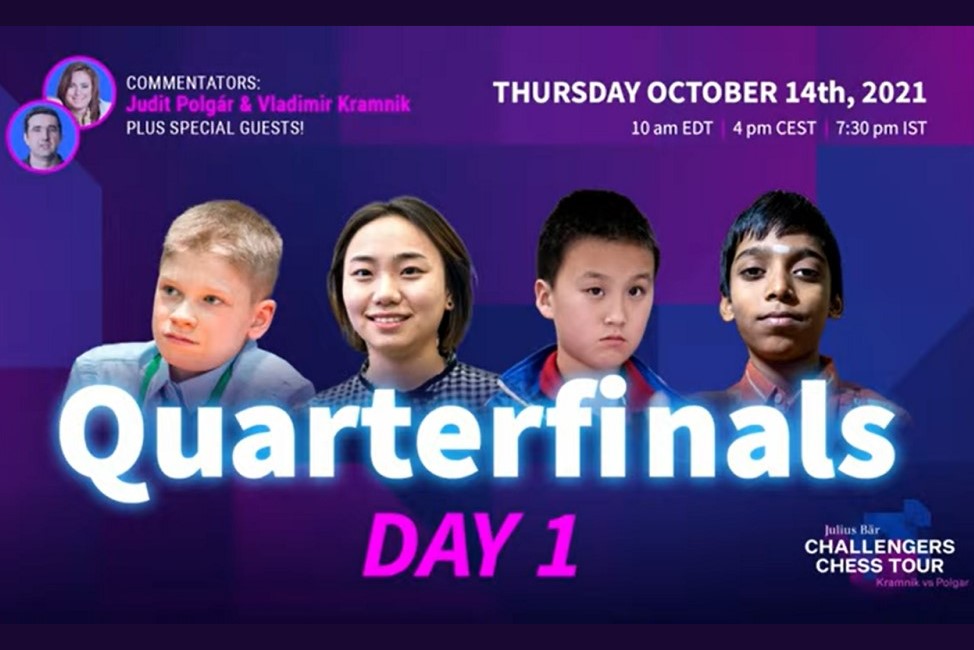


The first two matches of the quarterfinals at the Julius Baer Challengers Tour Finals were played on Thursday. Praggnanandhaa and Christopher Yoo moved on to the semifinals after winning matches of markedly different nature. Pragg will face either Vincent Keymer or Leon Mendonca while Yoo will play either Awonder Liang or Nodirbek Abdusattorov.
Vladimir Kramnik and Judit Polgar, the captains of the teams that participated in the tour, provided live commentary. The living legends saw how dominant was Pragg’s play against his Russian opponent, with Kramnik noting: “Pragg played extremely well today, [at] the level of a 2700 player”.
After making the most of Murzin’s poor time management in game 1 to get ahead on the scoreboard, Pragg scored with the white pieces.
Murzin’s (mistaken) decision to castle short in the previous move was immediately punished by the Indian prodigy, who opened up the position with 23.f3 — there followed 23...Qd7 24.fxg4 fxg4 (24...hxg4 is better, but also losing) 25.Bh6 h4 26.Bxf8 Rxf8
Black was forced to give up an exchange on f8, but that was not enough to stop White’s attack. Pragg now broke through with 27.Rxf7 Rxf7 28.e6. Murzin continued fighting, but only for a couple more moves. With two wins to his name, Pragg only needed a draw in the next game to reach the semifinals.
The 16-year-old from Chennai could have repeated moves in game 3, but decided to keep going from his superior position. His bravery was rewarded, as he obtained a third consecutive victory, which not only gained him the pass to the next phase but also the praise of the famed commentators.
The other match of the day lasted much longer. Facing the only girl who made it to the Finals, Yoo kicked off with a victory.
As GM Karsten Müller notes in his annotations, Black is in trouble since her opponent has the initiative in an opposite-coloured bishops position with rooks on the board. However, Lei could have continued fighting for a draw with 56...Ba7, as her 56...Bc7 gave White the chance to gain a key tempo with 57.d6. Yoo ended up winning the game eight moves later.
Lei bounced right back, though, convincingly getting a 32-move victory in game 2. The Chinese star had the black pieces in game 3, and missed a huge chance to score a win, as she failed to find the killer blow in the following attacking position.
24...Rdh8 is devastating here, as after 25.g3 Black would get to play the flashy 25...Rg6 (the f5-pawn in pinned) — not only that: the more natural 25...Bxg3 was also winning in this line. However, Lei went for 24...Qd6, and after 25.g3 Bxg3+ 26.Kg2, Black is no longer winning. The Chinese star needed to play accurately to hold a draw, in fact.
A draw in game 4 meant the match would be decided in tiebreaks. Another point was split in the first blitz encounter. In the second blitz encounter, Lei once again failed to put the finishing touches after getting a winning position — to make matters worse, she found herself in a losing position during the time scramble. Yoo clinched the all-important win and reached the semifinals.
Kudos to Yoo for continuously creating problems for his opponent, even from clearly inferior and uncomfortable positions.
Games 1 and 6 below include instructive analyses by endgame expert Karsten Müller.